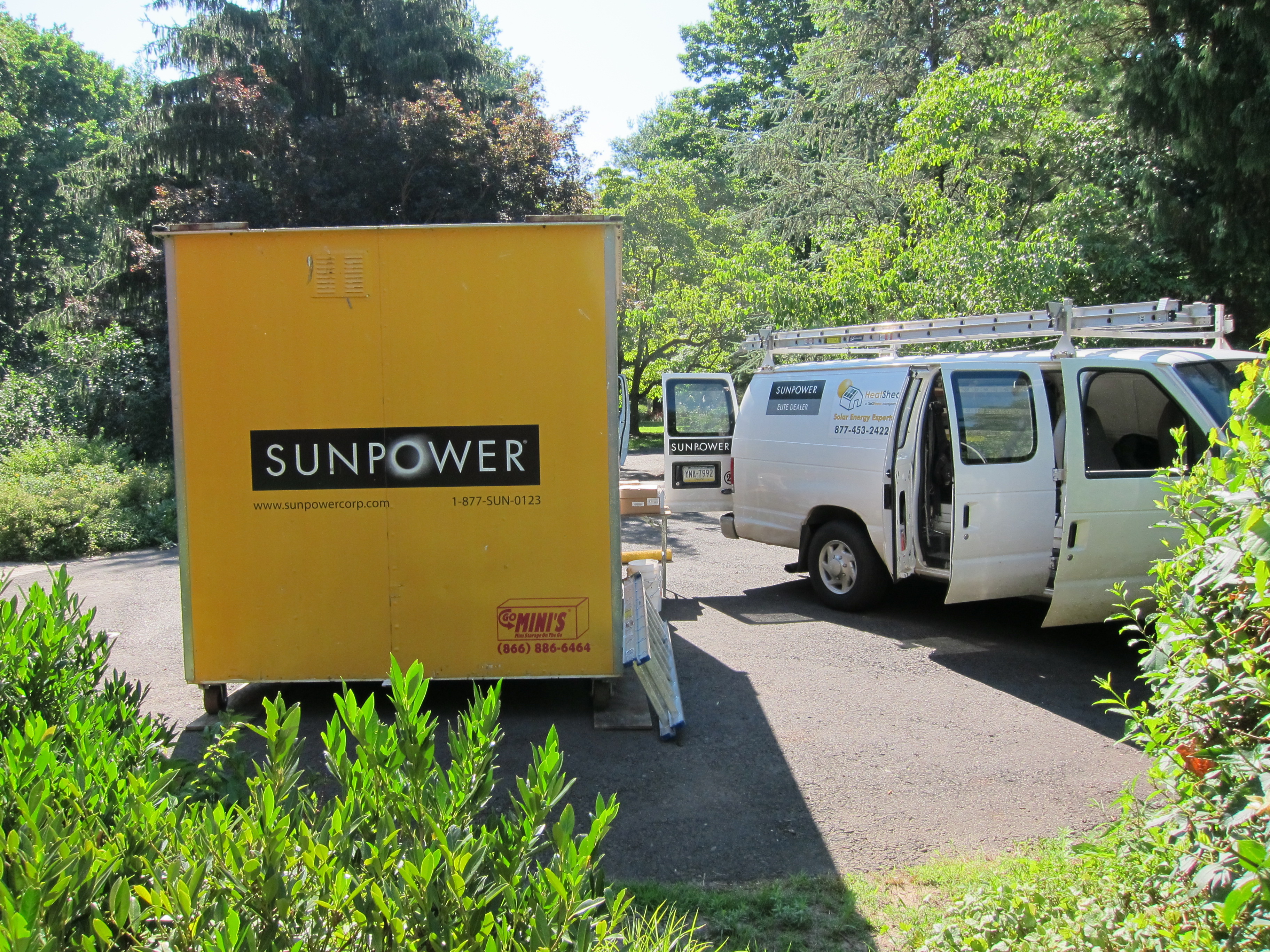Intuitively, clean solar panels are more efficient than dirty ones. But how much of a difference does it really make?
Like you, for years I have read that you *must* clean your panels because dirty panels waste so much sunlight. Since you’ve paid lots of money for your panels, you want every Watt that they can produce. But how much of a difference does it make?
This spring, after the flowers and trees sprayed their pollen everywhere, my panels were really dirty, totally covered with yellow pollen. I figured, this must be costing me big in solar production. So, being an energy geek, I decided to measure the output before and after cleaning (on consecutive days with clear skies at the same time).
In short, I discovered that, even this dirty, there was very little measurable difference. With my big array, when dirty, I got 8.4 kWh at the noon hour. After cleaning, around 8.5 kWh. However, the effect was so small that I think this measurement is within the margin for error since even a little change in conditions would make a greater difference.
Given the time and potential danger of climbing on the roof, hosing down the panels and cleaning them properly, this tiny difference hardly seems worth the effort. Certainly, it isn’t worth the several hundred dollars that a professional cleaners would charge, especially considering that the panels will just get dirty again after another week!
There are conditions when you should clean your panels. If you have a flat or very low slope roof in a dry climate, the dust can form a very thick layer that isn’t washed away by infrequent rains. Over time, the dirt will cake on, making it harder and harder to clean. Periodic maintenance makes sense in this case.
Bonus information – what really makes a difference in solar production!
As part of this experiment, I discovered that my solar panels were producing far less energy than expected. In the past, I had measured over 9.5 kWh for the noon hour. At other times, they produced less than 8.3 kWh. This is a *huge* variation! But why?
After some research, I learned that solar production decreases when the panels get hot. So I went back through years of solar production records from my system, picked days that had full, uninterrupted production (no clouds) and graphed it. Here’s the results:

First, I must explain why there are two lines. The bottom level, ranging from a max of 8.4 kWh to 7.4 kWh are the data from before my solar system was expanded. The top line is from after additional panels were installed.
Next, I admit that these are crude measurements because they are based upon the daily average temperature at my location. Ideally, I would put a temperature sensor on a panel, so I could measure output vs. panel temperature. However, the effect is nonetheless very strong and paints a clear picture – solar energy production drops very significantly as the days get hotter.
If you are paying attention, you will think – “when the days are colder, isn’t that winter, when the sun is much lower?” The answer is “YES!” My data were chosen between mid-March and mid-August of several years. You would think the June numbers, when the sun is highest in the sky would produce the most energy. Not so! Temperature clearly makes a much bigger difference than this amount of solar angle change. In fact, the best noontime production was in mid April, where the temperature is low and the sun is bright.
Please note that this is the peak hour production. The total day’s production, for my fixed mount system, is when the days are longest, even though the temperatures are higher. But I think it is useful for others to understand how much of a difference heating makes to solar production. So if you see your system underproducing during a hot summer day, that doesn’t mean it is malfunctioning. This can save you the pain and frustration of a service call.
The important thing that this implies is that a ground mounted system, with open backs and plenty of air flow as well as the naturally cooler temperatures of the moist ground below it, may be better for production than roof mounted, with very little natural air flow and a hot roof. Someone needs to study this, given how large a difference temperature makes to production.





 I recently overheard a conversation that made me think. A man, who was clearly respected by his friends as someone knowledgeable, commented that solar wasn’t ready for prime time because it isn’t efficient enough. But is this true?
I recently overheard a conversation that made me think. A man, who was clearly respected by his friends as someone knowledgeable, commented that solar wasn’t ready for prime time because it isn’t efficient enough. But is this true?
